Abstract
1. ATP sulphurylases were partially purified (20–40-fold) from leaf tissue of Astragalus bisulcatus, Astragalus racemosus (selenium-accumulator species) and Astragalus hamosus and Astragalus sinicus (non-accumulator species). Activity was measured by sulphate-dependent PPi–ATP exchange. The enzymes were separated from pyrophosphatase and adenosine triphosphatase activities. The properties of the Astragalus ATP sulphurylases were similar to the spinach enzyme. 2. The ATP sulphurylases from both selenium-accumulator and non-accumulator species catalysed selenate-dependent PPi–ATP exchange; selenate competed with sulphate. The ratio of V(selenate)/V(sulphate) and Km(selenate)/Km(sulphate) was approximately the same for the enzyme from each species. 3. Sulphate-dependent PPi–ATP exchange was inhibited by ADP, chlorate and nitrate. The kinetics of the inhibition for each enzyme were consistent with an ordered reaction mechanism, in which ATP is the first substrate to react with the enzyme and PPi is the first product released. 4. Synthesis of adenosine 5′-[35S]sulphatophosphate from [35S]sulphate was demonstrated by coupling the Astragalus ATP sulphurylases with Mg2+-dependent pyrophosphatase; the reaction was inhibited by selenate. An analogous reaction using [75Se]selenate as substrate could not be demonstrated.
Full text
PDF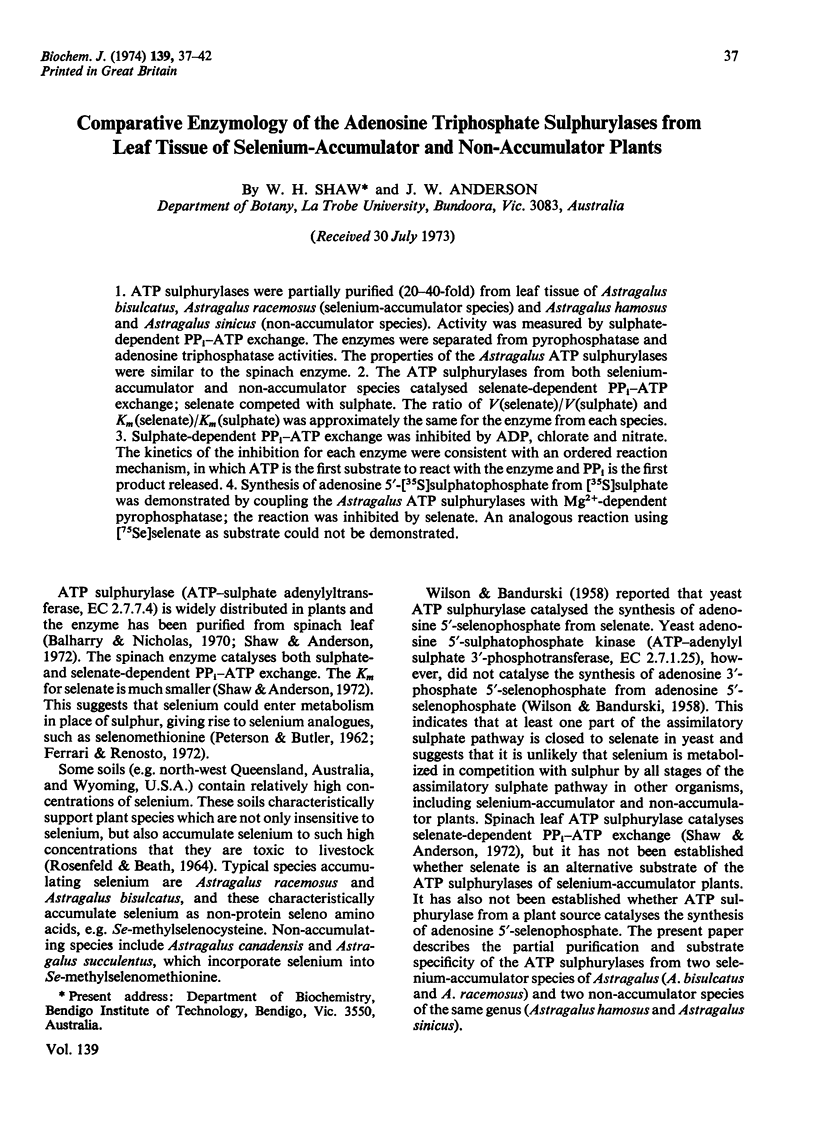
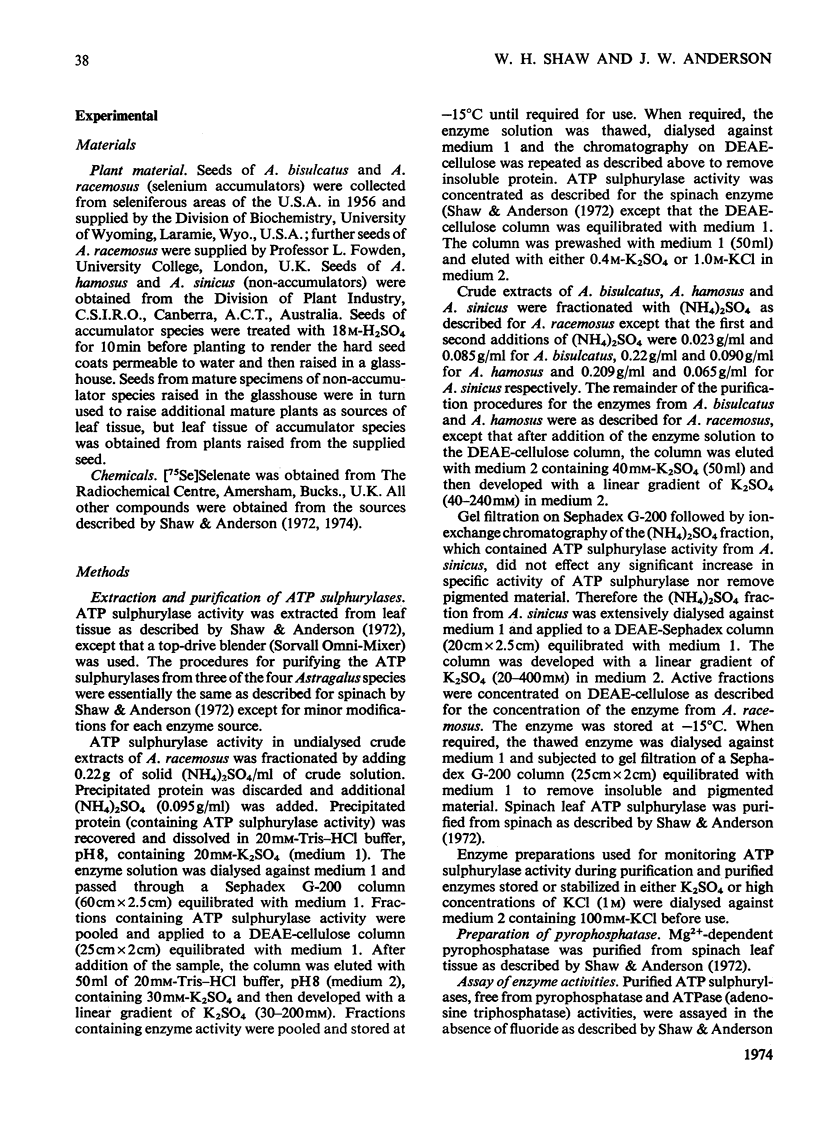
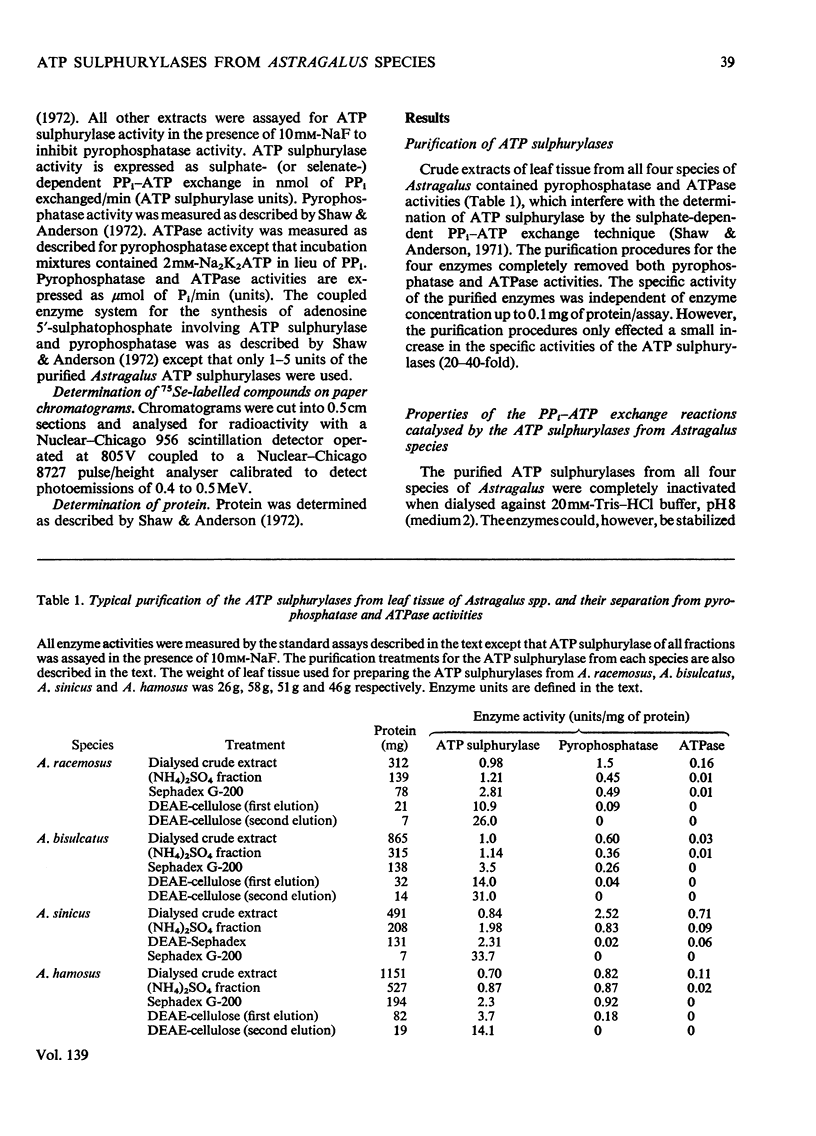

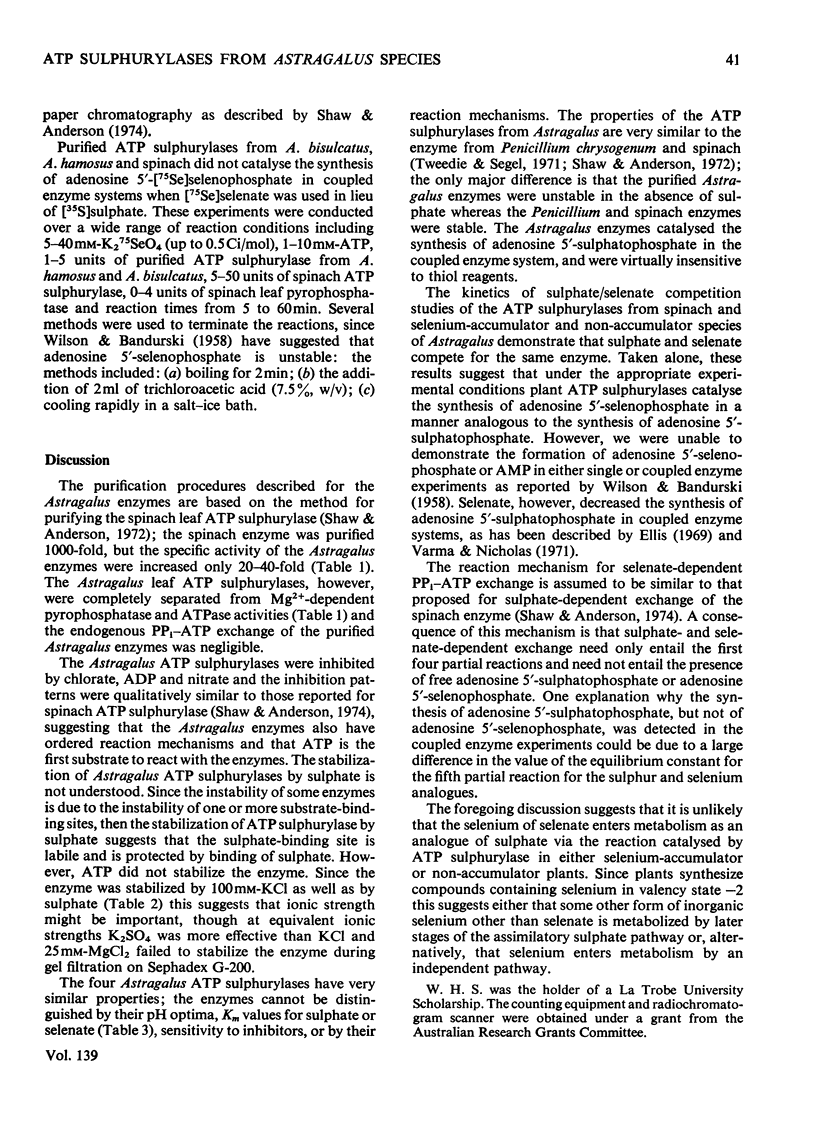
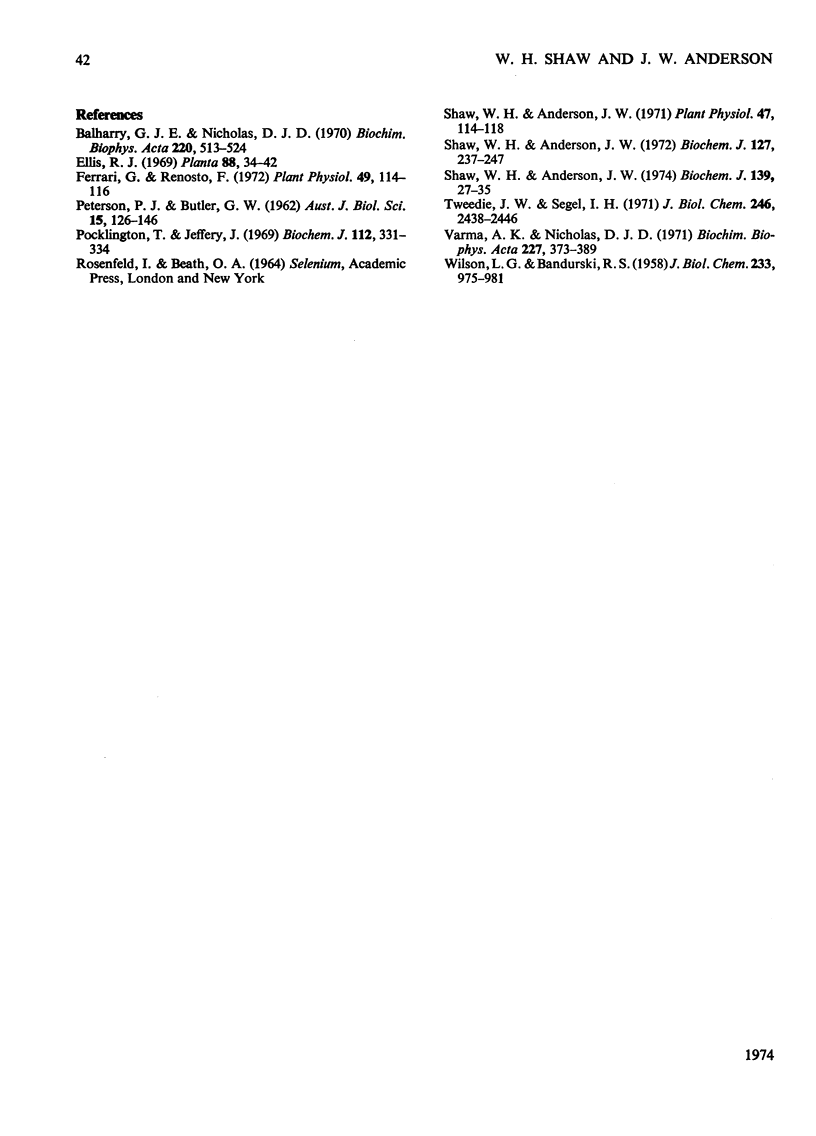
Selected References
These references are in PubMed. This may not be the complete list of references from this article.
- Balharry G. J., Nicholas D. J. ATP-sulphurylase in spinach leaves. Biochim Biophys Acta. 1970 Dec 16;220(3):513–524. doi: 10.1016/0005-2744(70)90282-2. [DOI] [PubMed] [Google Scholar]
- Ellis P. An act of love ... or an admission of failure? Euthanasia. Nurs Times. 1992 Sep 9;88(37):34–35. [PubMed] [Google Scholar]
- Ferrari G., Renosto F. Regulation of sulfate uptake by excised barley roots in the presence of selenate. Plant Physiol. 1972 Feb;49(2):114–116. doi: 10.1104/pp.49.2.114. [DOI] [PMC free article] [PubMed] [Google Scholar]
- Pocklington T., Jeffery J. Competition of two substrates for a single enzyme. A simple kinetic theorem exemplified by a hydroxy steroid dehydrogenase reaction. Biochem J. 1969 Apr;112(3):331–334. doi: 10.1042/bj1120331. [DOI] [PMC free article] [PubMed] [Google Scholar]
- Shaw W. H., Anderson J. W. Assay of adenosine 5-triphosphate sulfurylase by pyrophosphate exchange. Plant Physiol. 1971 Jan;47(1):114–118. doi: 10.1104/pp.47.1.114. [DOI] [PMC free article] [PubMed] [Google Scholar]
- Shaw W. H., Anderson J. W. Purification, properties and substrate specificity of adenosine triphosphate sulphurylase from spinach leaf tissue. Biochem J. 1972 Mar;127(1):237–247. doi: 10.1042/bj1270237. [DOI] [PMC free article] [PubMed] [Google Scholar]
- Shaw W. H., Anderson J. W. The enzymology of adenosine triphosphate sulphurylase from spinach leaf tissue. Biochem J. 1974 Apr;139(1):27–35. doi: 10.1042/bj1390027. [DOI] [PMC free article] [PubMed] [Google Scholar]
- Tweedie J. W., Segel I. H. Adenosine triphosphate sulfurylase from Penicillium chrysogenum. II. Physical, kinetic, and regulatory properties. J Biol Chem. 1971 Apr 25;246(8):2438–2446. [PubMed] [Google Scholar]
- Varma A. K., Nicholas D. J. Purification and properties of ATP-sulphurylase from Nitrobacter agilis. Biochim Biophys Acta. 1971 Feb 10;227(2):373–389. doi: 10.1016/0005-2744(71)90069-6. [DOI] [PubMed] [Google Scholar]
- WILSON L. G., BANDURSKI R. S. Enzymatic reactions involving sulfate, sulfite, selenate, and molybdate. J Biol Chem. 1958 Oct;233(4):975–981. [PubMed] [Google Scholar]


